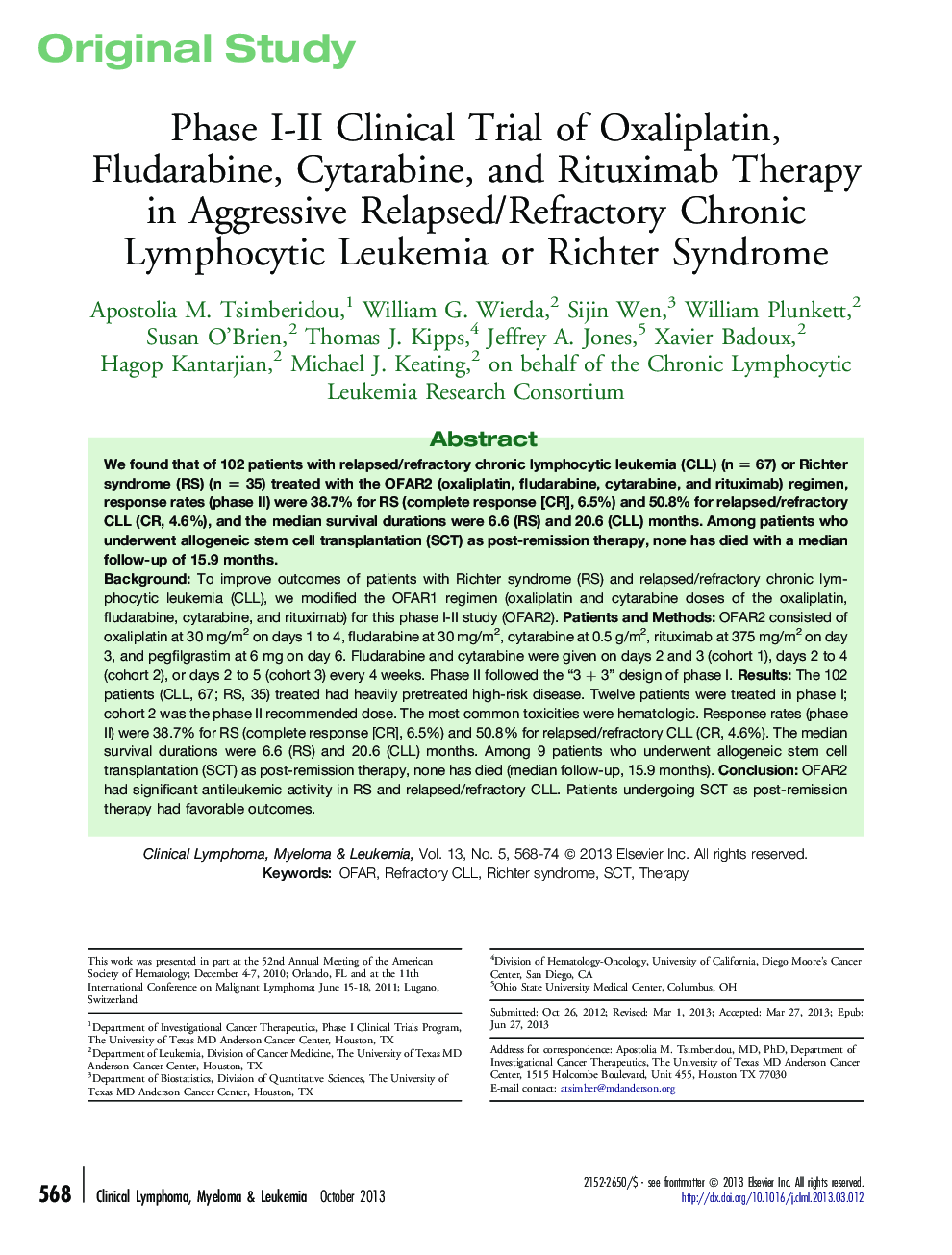| Article ID | Journal | Published Year | Pages | File Type |
|---|---|---|---|---|
| 2754722 | Clinical Lymphoma Myeloma and Leukemia | 2013 | 7 Pages |
BackgroundTo improve outcomes of patients with Richter syndrome (RS) and relapsed/refractory chronic lymphocytic leukemia (CLL), we modified the OFAR1 regimen (oxaliplatin and cytarabine doses of the oxaliplatin, fludarabine, cytarabine, and rituximab) for this phase I-II study (OFAR2).Patients and MethodsOFAR2 consisted of oxaliplatin at 30 mg/m2 on days 1 to 4, fludarabine at 30 mg/m2, cytarabine at 0.5 g/m2, rituximab at 375 mg/m2 on day 3, and pegfilgrastim at 6 mg on day 6. Fludarabine and cytarabine were given on days 2 and 3 (cohort 1), days 2 to 4 (cohort 2), or days 2 to 5 (cohort 3) every 4 weeks. Phase II followed the “3 + 3” design of phase I.ResultsThe 102 patients (CLL, 67; RS, 35) treated had heavily pretreated high-risk disease. Twelve patients were treated in phase I; cohort 2 was the phase II recommended dose. The most common toxicities were hematologic. Response rates (phase II) were 38.7% for RS (complete response [CR], 6.5%) and 50.8% for relapsed/refractory CLL (CR, 4.6%). The median survival durations were 6.6 (RS) and 20.6 (CLL) months. Among 9 patients who underwent allogeneic stem cell transplantation (SCT) as post-remission therapy, none has died (median follow-up, 15.9 months).ConclusionOFAR2 had significant antileukemic activity in RS and relapsed/refractory CLL. Patients undergoing SCT as post-remission therapy had favorable outcomes.
